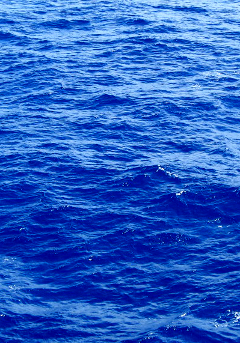Port Phillip Bay effects checked
 Drought and sewage cuts may have saved Port Phillip Bay, but not its ecosystem.
Drought and sewage cuts may have saved Port Phillip Bay, but not its ecosystem.
Researchers have revealed that a combination of improved sewage treatment and a historic drought significantly impacted the ecosystem of Port Phillip Bay in Victoria, Australia.
The findings, stemming from studies conducted over three decades, indicate that while reducing nitrogen levels in the bay curbed environmental harm, it also led to unintended ecological consequences.
In the 1990s, a major environmental study identified that excess nitrogen from sewage was entering Port Phillip Bay, a large marine bay adjacent to Melbourne, contributing to nutrient pollution.
To address this, authorities introduced more efficient sewage treatment processes in the 2000s, which resulted in a marked reduction in nitrogen levels entering the bay.
This coincided with the Millennium Drought, one of the longest and most severe droughts in Australia's recorded history.
The drought further reduced nitrogen input into the bay, with researchers estimating that nitrogen levels dropped by more than half during this period compared to the 1990s.
Although these measures helped to prevent potential eutrophication - a condition in which excessive nutrients lead to algal blooms and oxygen depletion - the dramatic decrease in nitrogen also had less positive effects on the bay’s ecology.
As nitrogen is a crucial nutrient for many marine organisms, its reduction led to a decline in biological productivity within the bay.
Studies show that seagrass meadows and kelp forests, which are critical habitats for a variety of marine species, suffered significant declines.
Similarly, populations of groundfish, which rely on these habitats for food and shelter, also experienced a downturn.
“Biological productivity in Port Phillip Bay was markedly affected by reduced nitrogen loads during the drought, resulting in declines in seagrass and kelp cover, as well as benthic fish biomass,” researchers reported in their review of the bay's ecosystem changes.
The findings highlight a complex trade-off for environmental management.
On the one hand, reducing nutrient inputs, such as nitrogen, is crucial for preventing water quality issues like eutrophication.
On the other hand, the lower availability of nutrients can reduce the overall productivity of the marine ecosystem, potentially disrupting food webs and leading to the loss of important species.
The researchers concluded that while setting conservative limits on nutrient inputs can help protect water quality, it is essential to balance these efforts with maintaining ecological productivity.
“Managers will need to consider both sides of this equation when managing the load of nitrogen entering Port Phillip Bay and potentially other marine systems around the world,” they said.
Experts say the study shows the need for holistic environmental management strategies that account for both nutrient reduction and the potential impacts on marine ecosystems.
It also shows how mitigating one environmental issue can inadvertently trigger others, highlighting the importance of adaptive management in marine conservation.








 Print
Print